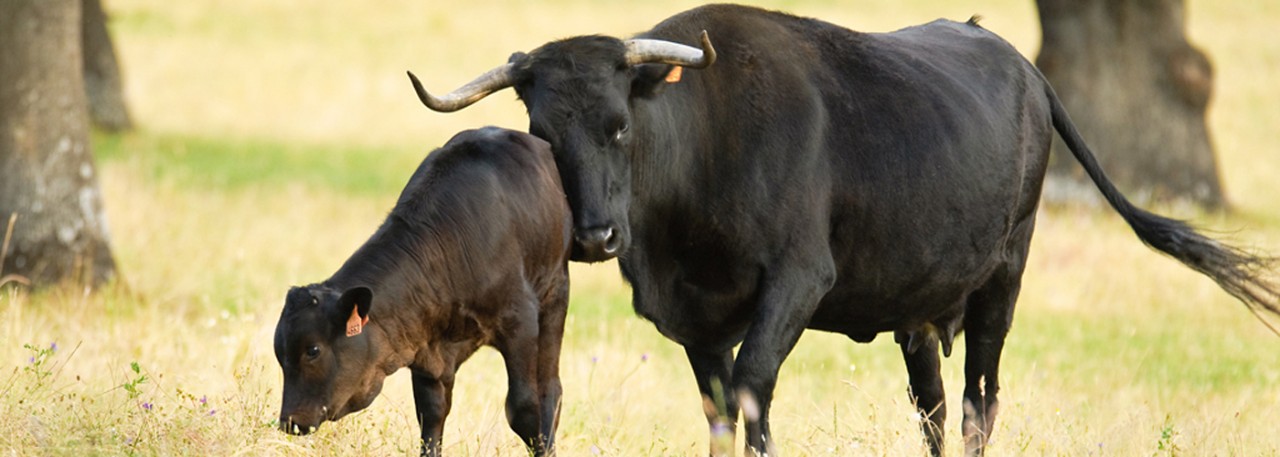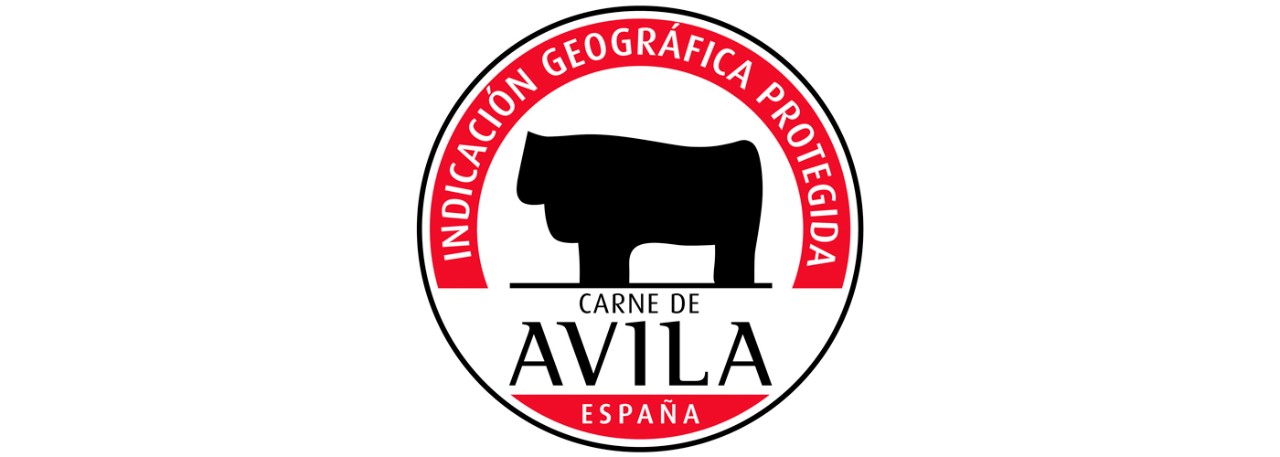.png.transform/rendition-xs/image_image%20(1).png)
Carne de Ávila PGI
Beef from cattle exclusively of the Spanish native Avileña-Negra Ibérica breed having adapted to mountainous environments and originally from the province of Ávila (Castile-Leon).
Tasting notes
Ávila beef is highly considered because of its tenderness and intense, quality flavor, a key factor being the high level of marbled and intramuscular fat.
Other notes
The main features of this cattle breed are its hardiness, fertility and longevity, allowing it to adapt and do well on very diverse types of terrain, such as those within the PGI area. The color is a uniform black, although some shading may be allowed. The visible mucous membranes and the snout are black although the latter may have a white surround.
The general characteristics of the different types of meat are as follows:
- Ternera: bright pink, with white fat, firm consistency, slightly moist and fine texture.
- Añojo: bright color, between light and purplish red, white or cream fat, firm to the touch, slightly moist and fine texture.
- Novillo: color between purplish and cherry red, cream-colored fat, firm to the touch, slightly moist, fine texture and medium level of intramuscular fat at the level of the longissimus dorsi.
Production / Processing method
Like most of the extensively-farmed native bovine breeds, the Avileña-Negra Ibérica is to be found on the dehesa rangelands. In Castile and Extremadura, the main vegetation found there is grass, crops, shrubs and trees.
Feed for the cattle bred for meat follows the techniques of extensive farming using natural feed resources. Any supplements given must be authorized by the Regulatory Council, and the use of products that might interfere with the animals’ normal growth and development is prohibited.
In reproduction, mating takes place freely with the farms’ own sires, and births are timed to take place when pastures are at their best. The percentage of births is above the inter-breed average, and calves are weaned at five to eight months.
Meat production includes the operations of slaughtering, dressing and packing prior to dispatch. The PGI meat comes from registered cattle farms and must fulfill the above-mentioned conditions.
After slaughter, the carcasses are chilled and treated to preserve the meat. Storage must be done in such a way as to avoid confusion with other non-PGI carcasses. Each carcass must at all times be traceable back to the animal from which it came.
Geography / Relief and climate
This breed follows a production system based on the use of a wide range of resources and long distances between the dehesa rangelands in the south-west and the central mountain ranges, as the cattle are able to adapt to any type of habitat. As a result, this breed can be found all over a broad strip of Spain – from Andalusia to Aragón, including Extremadura, Castile–La Mancha, Castile-León, Madrid and La Rioja.
The geographical area for the production of meat from the Avileña-Negra Ibérica breed tallies with the mountainous parts of central Spain. This area is characterized by its irregular relief and complex river systems, with high valleys, narrow gullies, sharp peaks, steep slopes and broad plains, and is sometimes subject to heavy snowstorms.
There are huge contrasts between the different winter and summer pastures and this cattle is farmed in a wide range of environments. When they graze in valley and mountain areas, the summers are cool and the winters very cold, with heavy frosts. When they graze on dehesa rangelands, the summers are usually hot and the winters mild.
Regulatory Council
Consejo Regulador de la IGP Carne de Ávila
C/ Padre Tenaguillo, 8
05004 Ávila (Castile-León)
Tel: (+34) 920 35 22 28
consejoregulador@carnedeavila.org
www.carnedeavila.org
Sources:
The main features of this cattle breed are its hardiness, fertility and longevity, allowing it to adapt and do well on very diverse types of terrain, such as those within the PGI area


- /content/dam/en/icex-foodswines/images/products/fresh-meat/carne-de-ávila-pgi/Carne%20de%20Ávila%20PGI%20carr1.jpg
- /content/dam/en/icex-foodswines/images/products/fresh-meat/carne-de-ávila-pgi/Carne%20de%20Ávila%20PGI%20carr2.jpg

Ávila (Castile-Leon)
